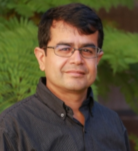2017 Lectureship Recipient

|
Professor Samir Mitragotri |
| Mellichamp Chair Professor Department of Chemical Engineering University of California, Santa Barbara Santa Barbara, CA |
|
Abstract |
|
"Understanding and Overcoming Biological Barriers for Drug Delivery" |
|
Effective delivery of drugs is a major problem in today’s healthcare. At a fundamental level, the challenge of drug delivery reflects the fact that the drug distribution in the body is limited by body’s natural metabolic processes and transport barriers. These biological barriers, while serving an important purpose of regulating body’s metabolic functions, limit the drug dose that ultimately reaches the target site. Accordingly, many drugs fail to reach their full therapeutic potential. Our research aims at developing a fundamental understanding of body’s key biological barriers such as skin and intestinal epithelium, and utilizing this understanding to develop novel means to negotiate these barriers to deliver drugs. Human skin is one of the most challenging and well-engineered biological barriers in the human body. In principle, it offers an ideal interface to administer drugs into the body through the use of a transdermal patch. However, its formidable barrier properties limit the drug dose that can enter the body. Our research has led to the understanding of how skin’s structure and transport properties can be modulated using external stimuli such as ultrasonic waves, fluid microjets and amphiphiles, and how these stimuli can be controlled to enable transdermal delivery of drugs that were once thought undeliverable. We have also extended the lessons learned from our skin exploration to understand and negotiate other biological barriers in the body. I will present an overview of the lessons learned from our exploration of these biological barriers and their application for drug delivery. |
|
Abstract |
|
"Clinical and Commercial Translation of Academic Inventions" |
|
Academia provides a fertile ground for invention of novel biomedical technologies. A large number of inventions have been reported from academic labs which have potential application in clinical medicine. Converting these inventions into useful clinical products, however, is a major challenge. It requires attention to issues such as safety, manufacturability, regulatory hurdles, cost, and patient acceptance—issues that are not typically considered in academic research. Clinical translation also requires availability of personnel and resources which often arise only during the process of commercial translation. These challenges pose a considerable hurdle for translation of academic inventions, and many exciting technologies fail to cross this hurdle. While these topics have not been traditionally included in university’s academic or research mission, there is growing interest from all constituencies, especially students, in addressing these topics. I will present an overview of translational challenges as well as potential means to overcome them. |
